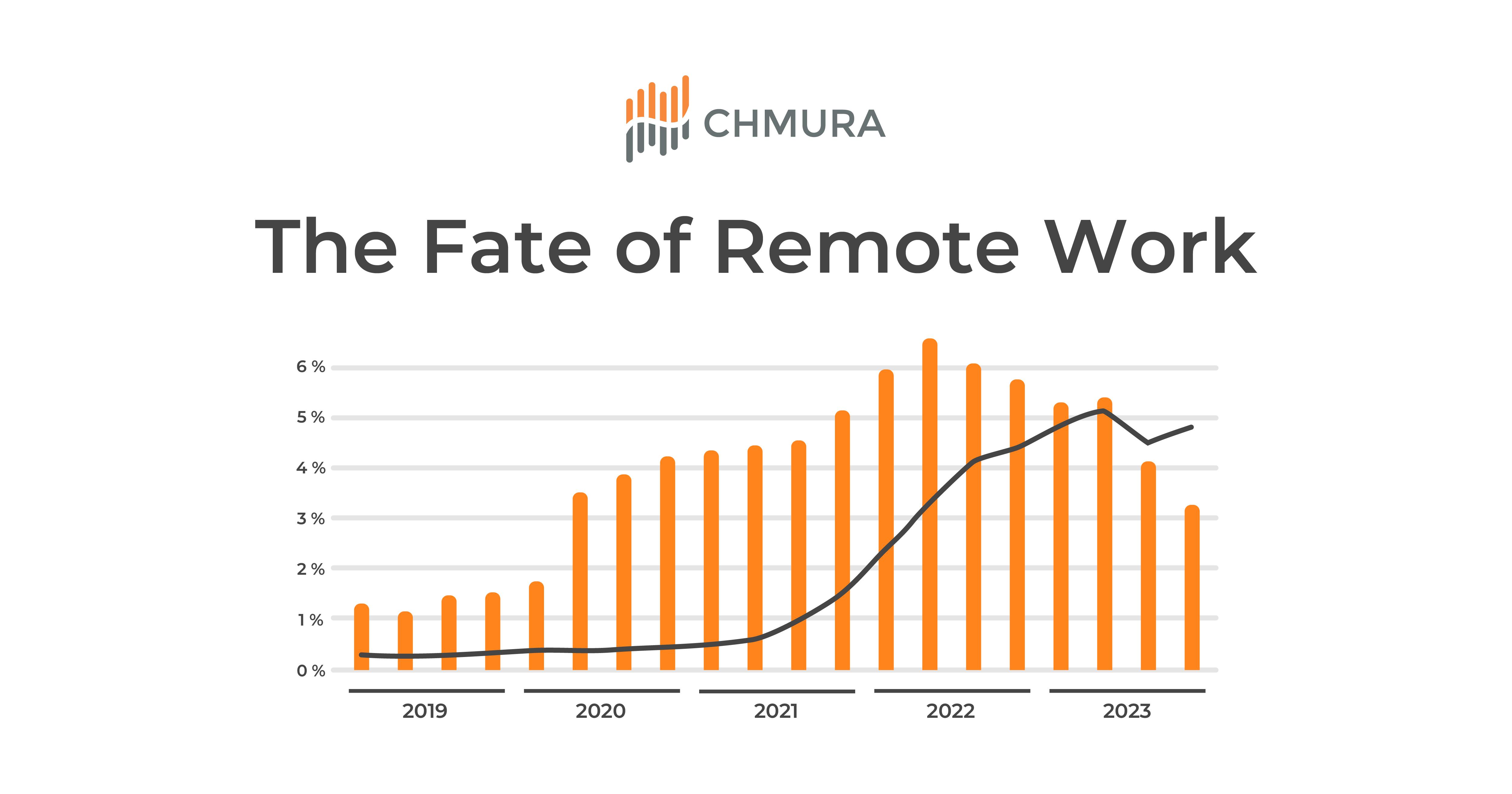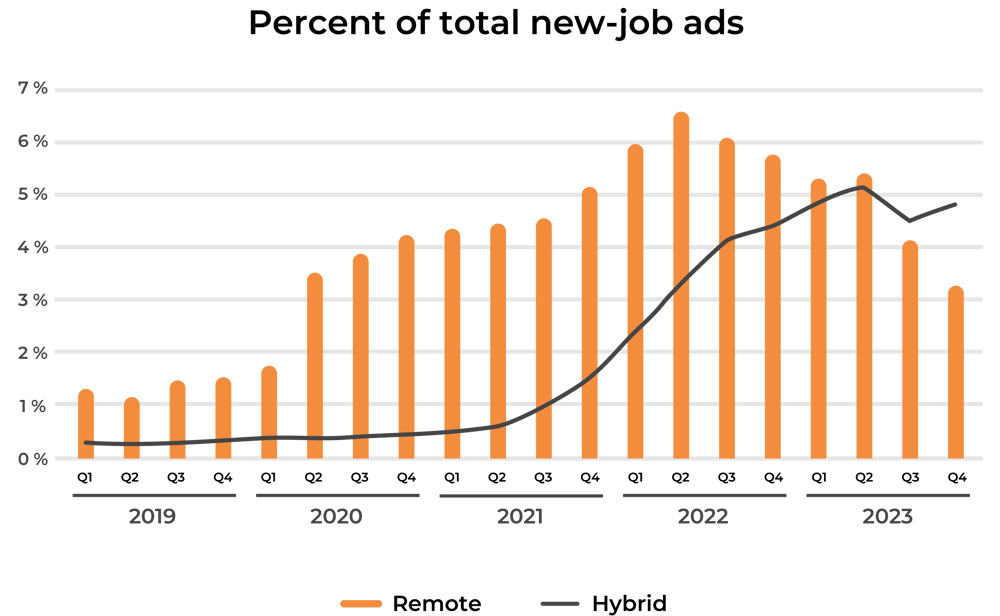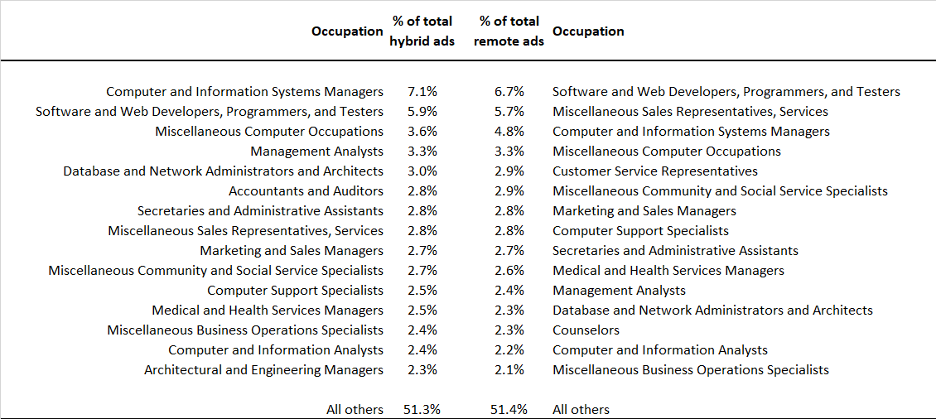The Fate of Remote Work

The terms “remote” and “hybrid” work are often used interchangeably. However, the two should not be confused, especially when trying to establish whether the movement toward remote work, which took off at the onset of the COVID pandemic, is here to stay. Remote work involves complete off-site work, often from home, while hybrid work combines both in-office and offsite work, offering a flexible arrangement that includes some days in the physical workplace and others working remotely. This difference has implications for the definition of the employment labor shed. Remote workers are not bound to live in proximity to the workplace, expanding the talent pool for an organization. This has led to several financial initiatives aimed at attracting remote workers into a region to boost local economies. Workers on a hybrid schedule may be able to relocate a bit farther away from the workplace, but they are still geographically limited to locating within a commuting area.
During the pandemic, working from home made sense. With the end of the public health emergency, many employers have announced the end of work-for-home policies, but some employees have resisted returning to the office. Initially, a very tight labor supply, with one unemployed worker per two job openings, gave workers more bargaining power. In response, employers kept delaying the start of return to office dates. As the labor market lost steam, workers’ ability to request to work remotely has weakened, and many firms are now pushing for a return to the office (RTO). We see this change in Chmura’s RTI data. The rate of new job ads for remote positions peaked in the second quarter of 2022 and it has declined since. By the end of 2023, it had dropped by 50% from the peak.
Figure 1: Remote Work Is Down, Hybrid Is Up

U.S. employers have lagged behind their European and Asian counterparts in bringing their employees back to the office. As of July 2023, office occupancy in the United States was still less than 50% of its pre-pandemic level compared to 75% or more in Europe and Asia. Things are looking to change in 2024, with more and more companies joining the RTO movement. The question is, what is the new return to the office policy going to look like? Employers want workers back in the office, but they are also willing to offer some concessions to accommodate workers' demand for more work-life balance. Hybrid work seems a reasonable middle ground between the two positions. According to a recent survey of company decision-makers, the most common form of RTO for 2024 will be 3 days per week.
A shift toward more hybrid work mirrors the increase in the volume of new ads that reference a hybrid schedule. This is in sharp contrast with the drop in the prevalence of remote jobs. As shown in the figure above, new job ads for hybrid positions have surpassed those for remote positions in the second half of 2023. As expected, occupations that account for most of the remote job ads are also those that account for the most hybrid job ads. The table below shows the top 15 occupations by volume of job ads mentioning remote and hybrid positions for the first month of 2024 in Chmura RTI’s database. In both cases, these 15 occupations represent about half of all posts.[1] We do observe some shifts, but they appear to be minor. A notable exception is counselors, which rank # 13 among remote occupations but #28 among hybrid occupations. Conversely, accountants and auditors rank # 6 among hybrid occupations, but #16 among remote occupations.
Table 1: Top Broad Occupations for Hybrid and Remote Job Ads

While we expect more people to show up to the office in 2024, we do not expect offices to be full every day of the week as in the pre-pandemic work environment. In the first month of 2024, office occupancy was the highest in the middle of the week and lowest on Friday according to data collected by Kastle Systems, an access control provider for more than 41,000 businesses across the nation. Because of this new normal, the architecture of the workspace is evolving with more shared workstations and less personal desk space. This shift has decreased the need for office square footage with significant consequences for commercial real estate values. McKinsey Global Institute estimated that as much as $1.3 trillion of real estate value could be erased around the world by 2030 because of remote/hybrid work.
--------------------------------------------
[1] There are 459 broad occupations in the Standard Occupational Classification system. About 16 occupations account for 50% or more of all remote or hybrid job postings.
Subscribe to the Weekly Economic Update
Subscribe to the Weekly Economic Update and get news delivered straight to your inbox.











